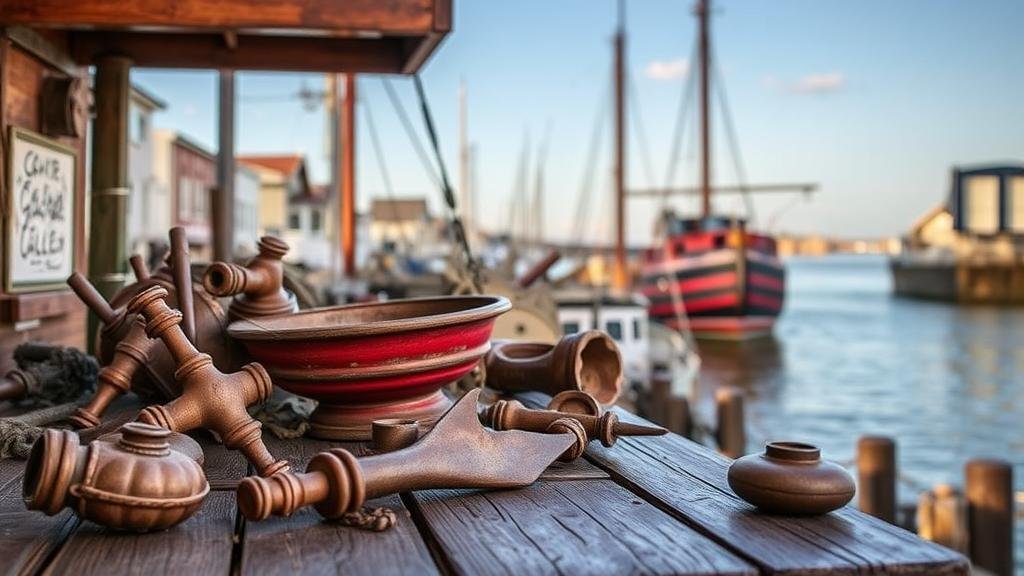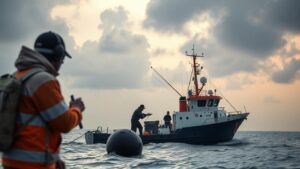Detecting in Historic Seaports for Nautical Tools and Trade Relics
Detecting in Historic Seaports for Nautical Tools and Trade Relics
The study of historic seaports offers a fascinating glimpse into maritime trade, navigation, and culture across centuries. These bustling hubs were once the epicenters of commerce and innovation, where ships from all over the world converged to exchange goods and ideas. Detecting for nautical tools and trade relics within these areas not only provides insight into the historical significance of these port cities but also allows for the preservation of maritime heritage. This article will explore the techniques, technologies, and findings associated with detecting historical seaports, shedding light on the artifacts left behind by generations of maritime activity.
The Importance of Historic Seaports
Historic seaports were vital to the economic and social landscapes of their time. They served as gateways for goods and people, contributing to the growth of cities and the rise of diverse cultures. Seaports like Venice, Amsterdam, and San Francisco were instrumental in the trade of spices, textiles, and precious metals, shaping global economies. In todays context, these locations are often designated as archaeological sites, combining preservation with educational opportunities.
Methods of Detection
Detecting in historic seaports typically involves several methodologies that combine both traditional archaeological techniques and modern technological advancements:
- Ground Penetrating Radar (GPR): This non-invasive technique employs radar pulses to image the subsurface, allowing archaeologists to locate anomalies that may indicate artifacts or structures.
- Magnetometry: Ideal for detecting ferromagnetic materials, magnetometry helps identify shipwrecks or nautical tools made of metals like iron and lead, which may be buried underwater or sediment.
- Metal Detecting: This practical method is often employed by amateur and professional archaeologists alike. In particular designed for underwater use, modern metal detectors can effectively locate small metal objects among dense sediments.
Case Studies of Successful Detecting
Numerous examples underscore the rich bounty that historic seaports provide. One significant case study is the discovery of the Dutch East India Company shipwreck in the harbor of Batavia, modern-day Jakarta, Indonesia. Utilizing GPR and magnetometry, archaeologists uncovered various artifacts, including trade goods such as ceramics and spices, which exemplify the commercial activity of the era.
Another notable excavation occurred in the harbor of Alexandria, Egypt, where underwater archaeology revealed remnants of ancient warehouses and loading docks. Using advanced sonar scanning technology, researchers documented the architectural features of these structures and recovered a trove of navigation tools like astrolabes and compasses, vital for understanding ancient maritime navigation techniques.
The Challenges of Detection
While the potential for discovering nautical relics is significant, detecting in historic seaports is fraught with challenges. These can be broadly categorized into:
- Environmental Factors: Sedimentation, erosion, and water visibility can hinder detection efforts, making it difficult to locate artifacts buried deep underwater or obscured by debris.
- Legal Restrictions: Many historic seaports are subject to strict regulations aimed at protecting cultural heritage. Navigating these legal frameworks can limit the scope of detection projects.
- Technological Limitations: While modern tools enhance detection capabilities, they are not foolproof. Overlapping magnetic fields or seawater interference can lead to false readings in artifact detection.
Preservation of Findings
Once artifacts are discovered, their preservation becomes essential. Techniques such as conservation cleaning, material stabilization, and cataloging play critical roles in ensuring that these historical treasures are maintained for future generations. aim is not just to preserve artifacts but to contextualize them within the broader narrative of maritime history.
Real-World Applications of Findings
The findings from detecting historic seaports can serve numerous purposes beyond mere historical interest. They can:
- Enhance Education: Artifacts serve as tangible links to the past, enriching educational curricula at all levels by providing real-world connections to historical events.
- Support Tourism: The discovery and preservation of nautical relics can boost local economies through increased heritage tourism, attracting visitors eager to learn about maritime history.
- Inform Modern Maritime Practices: Understanding ancient navigation and trade methods can provide insights relevant to contemporary maritime operations and environmental management strategies.
Actionable Takeaways
For those interested in participating in or supporting the exploration of historic seaports, consider the following action steps:
- Support local archaeological initiatives and museums dedicated to maritime history.
- Engage in community clean-up or heritage projects that help preserve the integrity of these historical sites.
- Consider pursuing educational pathways in archaeology or marine studies to contribute to this vibrant field of research.
To wrap up, detecting in historic seaports presents a unique opportunity to uncover and preserve the maritime heritage that has shaped our world. By utilizing advanced detection methods, facing challenges head-on, and applying the findings to modern contexts, we can ensure that the stories of our past are not only remembered but celebrated.



